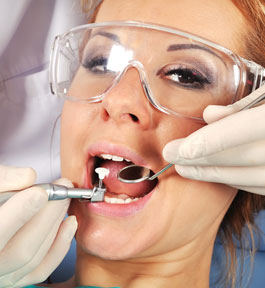Perhaps you’ve heard some controversy over using fluoride- should it be in our toothpaste or is it hazardous? Should children steer clear or can it benefit their growing teeth? A quick search on the Internet will yield hundreds of results that tout the benefits of the naturally occurring chemical ion, and just as many that demonize it. It’s hard to know what or who is right.
In fact, both sides are right: there are benefits and drawbacks both to using fluoride.
Fluoride functions by stopping, and in some cases even reversing, the process of tooth decay. The Canadian Dental Association strongly recommends that everyone use fluoridated toothpaste.
Fluoride also has an antibacterial effect. With continual exposure to fluoride, teeth actually become stronger and can ward off damage from foods that turn acidic by the presence of certain bacteria, such as carbohydrates, or from foods that are in fact truly acidic.
However, fluoride intake should be monitored in children under the age of six. A dentist will guide the child and his parents as to the right amount and method of the fluoride intake for the child’s particular needs.
It is essential that fluoride not be overused; in excess, it leeches out the calcium in teeth, which actually accelerates the demineralization process and eventually causes tooth decay. Particularly important is to watch children as they brush to make sure they don’t make a habit of swallowing their toothpaste. During the formation of adult teeth, extensive fluoride intake will cause white spots to appear on the surface of the new teeth. These spots are where the enamel has weakened and chipped away.
< http://www.cda-adc.ca/en/oral_health/faqs/fluoride_faqs.asp>






